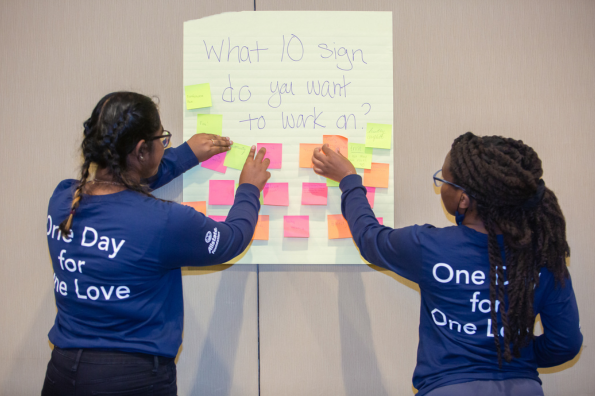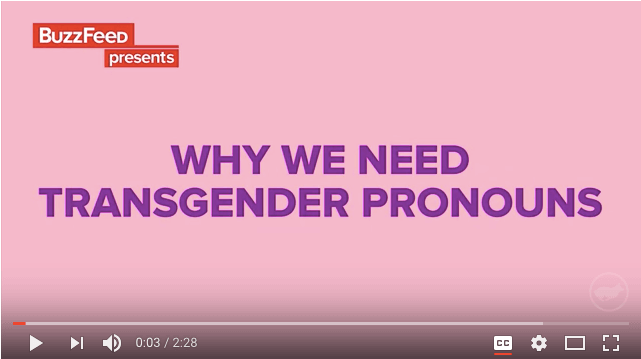A conflicting time filled with both emotional turmoil and happiness, choosing to transition from the gender identity you were prescribed at birth to the one that feels authentically like yourself can be straining on a relationship. While transgender activists and celebs, like Janet Mock, and Chaz Bono have helped to increase the visibility of transgender people, many are still struggling with the implications of choosing to transition within a relationship.
Whether heterosexual or gender non-conforming partners know it or not, their reactions to their partner’s transition will have a huge impact on their partner’s transition journey (for better or worse).
Though your partner is changing their outside, and the way the world sees them, they are still the person you fell in love with initially. And like all relationships, making it work while your partner transitions will be filled with pitfalls, new discoveries, and personal growth but I promise the journey is rewarding especially as your partner’s confidence and self-esteem improve.
During this incredibly life-affirming time, you can learn to be an ally to your partner as you lovingly support their transition. Below are some initial steps you can take to support your partner’s transition.
1. Get Educated
Educate yourself about the transgender community. Did you know that the trans identity can vary depending on the person’s gender identity, or how they feel on the inside and the words they use to describe themselves, and gender expression, the way they express their gender – here is an article by Human Rights Campaign that explains the difference.
Show your partner that you care by educating yourself on everything from the challenges the transgender community face, such as harassment and barriers to healthcare to the latest LGBTQ+ vocabulary and tips for being a good ally. To start, I’d recommend checking out Everyday Feminism’s guide to non-binary gender, It’s Pronounced’s Metrosexual’s comprehensive list of LGBTQ+ vocab, GLAAD’s tips for transgender allies and this really cool blog called Ask a Non-binary person. Your partner will appreciate all of the information you’ve gained on your own, trust me.
2. Ask About Pronouns
During this process let your partner express their gender identity the way they want while transitioning at the pace they’re most comfortable with. If they want to be called by a different name, do it. And while you’re at it, ask them what their preferred pronouns are because misgendering your partner can seriously mess with their self-esteem and in some cases heighten their body dysmorphia. As Meg Zulch points out in their article, 7 Reasons Using The Correct Pronouns Can Be Essential For People’s Body Positivity, “It’s hard to be trans; it’s hard to live in a body that doesn’t always feel like your own or look how you want it to look. So when folks misgender me, it reinforces my insecurities about my body.”
Asking your partner what they prefer is a sign of respect and sure way to show that you care and want to be supportive of them. Some people prefer to go by they/them while others prefer lesser known gender-neutral pronouns like Ze and Zir. Either way, “using the correct pronouns when addressing others is often essential for their body positivity, says Zulch.
Check out this video to learn why using the correct pronoun is important:
3. Give Yourself Permission to Feel all of the Feels
Although they are the same person on the inside, there is a grieving process, or an adjustment period, in closing the relationship as you’ve known it to be. Just know that it is a process for not only your partner, but for yourself too, and it does get better over time. Remember to talk to your partner often and honestly about any concerns or worries you have about the relationship. If you find yourself becoming overly critical or angry with your partner during the conversation then you may need to pause until you’ve calmed down. We’re all guilty of saying things we don’t mean especially when we’re upset but ultimately we’re responsible for our own behavior and the last thing you want is to say something you’ll regret later.
4. Ask Your Partner What They Need

You care about your partner so you know what’s best for them, right? Wrong. If someone is calling all of the shots or telling you what to do, that’s not love, that’s control. In healthy relationships, people feel supported not pressured by their partner. And simply asking your partner what they need as they transition can help you avoid making harmful assumptions hurt (not help) your relationship. Do they need you to accompany them to a doctor’s appointment? Do they need help filing legal documents for a name change? Do they need to vent?
5. Listen
In some cases, individuals struggle to come to terms with who they are due to their fear of being rejected. While your partner cannot be your personal walking talking LGBTQ+ encyclopedia they should feel safe coming to you to talk about their experience. In fact, in healthy relationships, your partner should be able to speak to you about virtually anything including their gender identity.
6. Be Their Biggest Supporter
As your partner transitions, they may face inequality in the workplace, such as discrimination or harassment (which, by the way, is absolutely illegal). The constant pressure to conform to outdated gender stereotypes and negotiate their gender identity with family and peers can erode your partner’s mental and emotional health. You can alleviate some of this outside pressure by becoming their biggest supporter. Help them through officially changing their name if they want, shopping for new clothes that they’ll feel comfortable in, and by accompanying them to any medical procedures such as hormone replacement therapy (HRT).
7. Make Them Feel Safe
You can help your partner feel secure by being a beacon of positivity. They’ll appreciate that no matter what may happen in their external environment, their home, where you are, is their safe space. Additionally, finding a community outside of your relationship is equally important for your partner to feel accepted and secure. Less legal protection and stigma mean transgender people are vulnerable to isolation and lack of social and economic support systems. Encourage your partner to reach out to local LGBT Centers where they can connect with support groups for people that are transitioning. LGBT Centers like the LA LGBT Center and LGBT Community Center of NYC can also help transgender individuals find jobs and provide healthcare resources too!
8. Talk About Sex
There are things you may do (out of habit) that could trigger your partner’s body dysphoria. In their article, “ 8 Tips on Respectfully Talking Pleasure, Sex, and Bodies With Your Trans Lover,” Sam Dylan Finch explains while most people recognize how important it is to discuss sexual preferences with their partner, some people avoid the topic altogether preferring to say nothing at all rather than risk saying the wrong thing to their trans partner. “However, if we don’t talk about [sex] first, it’s far too easy to cross boundaries, make hurtful assumptions, and turn what should’ve been a sexy, fun encounter into a serious bummer,” Finch says. To alleviate the anxiety associated with this subject, Finch suggests framing the discussion as a casual chat about your likes and dislikes. He explains, “This is great because that means both partners can discuss their needs, and the spotlight isn’t exclusively on your partner and their gender identity.”
9. Remember Your Partner’s Identity Doesn’t Define Your Relationship
There are lots of ways your partner may feel othered outside of your relationship, but what matters more than your partner’s gender identity is the love you have for each other.
Take the pledge to #LoveBetter with One Love today by making a commitment to bring healthy behaviors into your relationship.
Browse by Category

Celebrate Your Freedom: Independence in Relationships
As Independence Day rolls around, let’s chat about something just as important as fireworks and BBQs: independence in relationships. Your…
Practicing Equality in Your Relationships
Equality is one of One Love’s 10 Signs of a…
How to Practice Allyship Using the 10 Signs
During the month of June the United States observes both…
Ways We Self-Sabotage In A New Relationship After an Unhealthy One
You did it. You ended your unhealthy relationship. You grieved.…
3 Steps to Spring Clean Your Relationships
A lot of time, energy, and marketing dollars go into…















